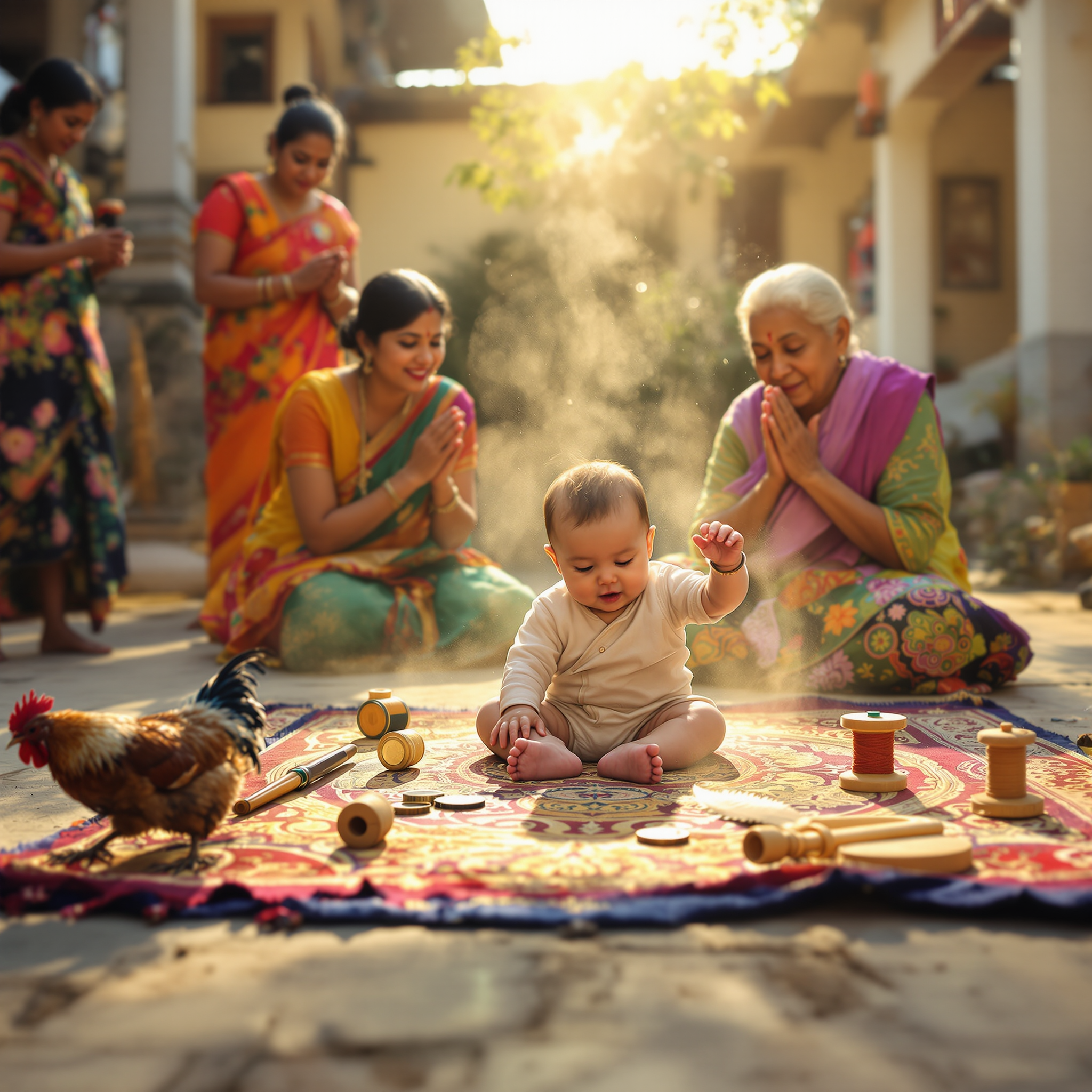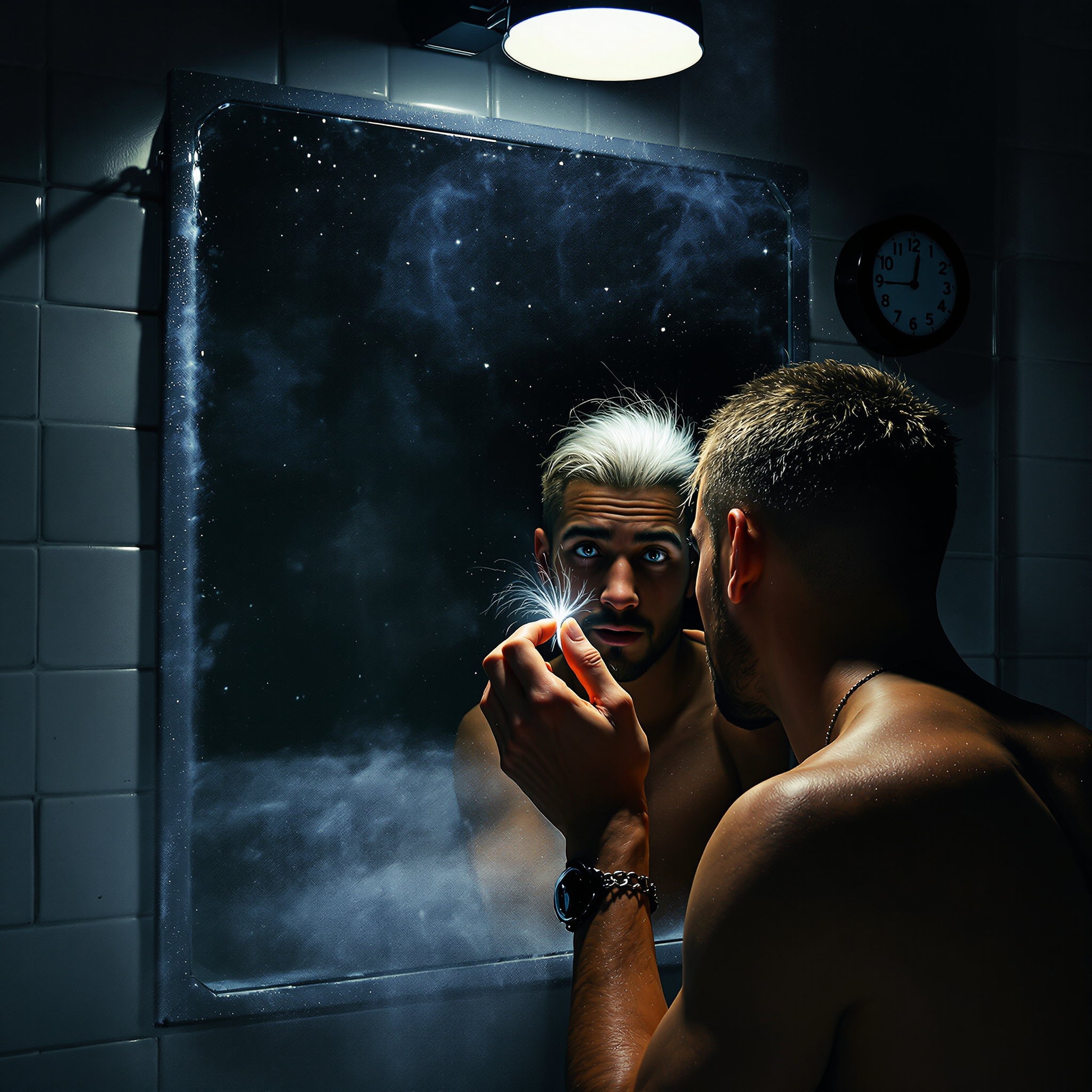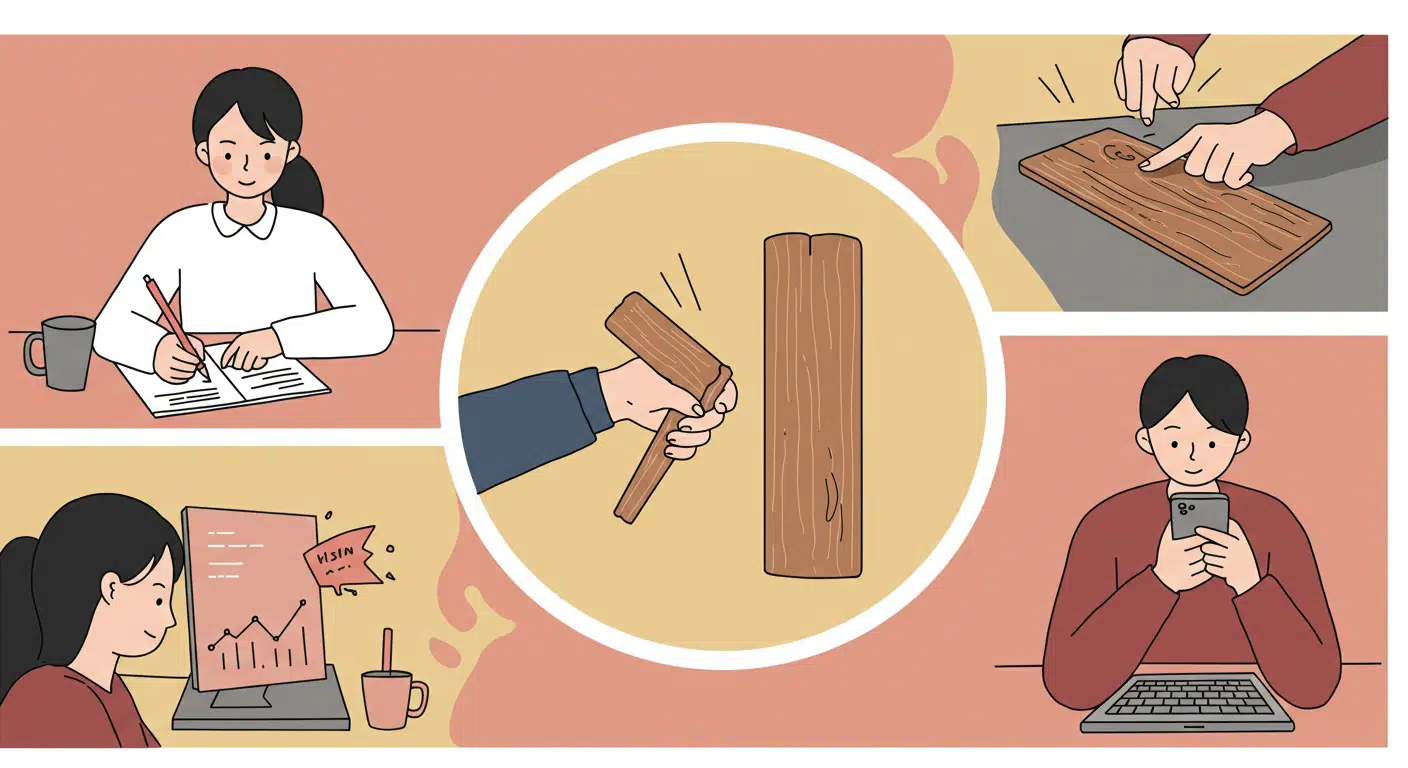This superstition advises against pulling out white or gray hairs with the belief that removing one will result in the appearance of two more in the same area. Culturally, the act is often viewed as tempting fate or interfering with the natural aging process. The superstition acts as a deterrent for cosmetic self-intervention, especially as white hairs are traditionally associated with wisdom or seniority in many cultures. There is no physiological basis for the claim: hair follicles function independently, and plucking one does not cause others to duplicate. However, it remains a widely circulated belief, especially in informal discussions about aging and appearance. In some regions, it is also said that pulling out one white hair might cause even more to grow not only on the head but sometimes symbolically in other parts of life such as ‘gaining other problems’.

A baby’s future career or fate is predicted by the first object they select during a ceremonial setup.
In several Asian and Eastern European cultures, a traditional ceremony is held for babies usually around their first birthday. Known


